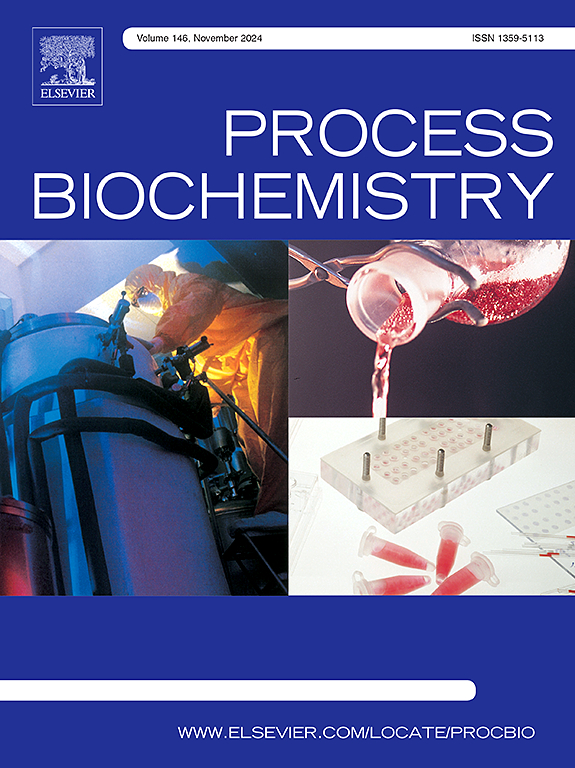Effect of exogenous combinations of fatty acids on the production of monensin by Streptomyces cinnamonensis
IF 4
3区 生物学
Q2 BIOCHEMISTRY & MOLECULAR BIOLOGY
引用次数: 0
Abstract
Monensin is produced by the fermentation of Streptomyces cinnamonensis, which is in wide use in the agricultural and pharmaceutical industries. To improve the monensin yield, this study focused on evaluating the role of fatty acids in vegetable oil on the strain growth and secondary metabolism. Results showed that soybean oil was the most effective for monensin fermentation, followed by olive, peanut, camellia, corn, and linseed oils. Four fatty acids, oleic acid, linoleic acid, stearic acid, and palmitic acid, predominantly consisting of these vegetable oils, were observed to exert a positive effect on the monensin fermentation, thus resulting in the monensin titer increasing by 8-, 6-, 2-, and 3-fold, though far inferior to the soybean oil (10-fold). Optimization of fatty acid addition, comprising 1.38 % oleic, 2.78 % linoleic, 0.31 % stearic, and 0.50 % palmitic acid, elevated the monensin titer to 15.0 g/L. With a fed-batch fermentation in a 10-L tank, the fermentation reached 26.71 g/L of the monensin, above 10 % higher than that of the soybean oil. The suitable combination of fatty acids in vegetable oil was favorable for the microbial growth and monensin synthesis, which can shed light on the desirable application of different oil varieties in the industrial.
外源脂肪酸组合对肉桂链霉菌产莫能菌素的影响
莫能菌素是由肉桂链霉菌发酵产生的,在农业和制药工业中有着广泛的应用。为了提高莫能菌素的产量,本研究重点研究了植物油中脂肪酸对菌株生长和次生代谢的影响。结果表明,大豆油对莫能菌素的发酵效果最好,其次是橄榄油、花生油、茶油、玉米油和亚麻籽油。主要由植物油组成的油酸、亚油酸、硬脂酸和棕榈酸四种脂肪酸对莫能菌素的发酵有积极作用,使莫能菌素的滴度提高了8-、6-、2-和3倍,但远不如大豆油(10倍)。脂肪酸添加量为1.38 %油酸、2.78 %亚油酸、0.31 %硬脂酸和0.50 %棕榈酸,优化后莫能菌素滴度达到15.0 g/L。在10-L的罐中分批补料发酵,莫能菌素的发酵量达到26.71 g/L,比豆油的发酵量高出10 %以上。植物油中脂肪酸的适当组合有利于微生物的生长和莫能菌素的合成,为不同油脂品种在工业上的合理应用提供了依据。
本文章由计算机程序翻译,如有差异,请以英文原文为准。
求助全文
约1分钟内获得全文
求助全文
来源期刊

Process Biochemistry
生物-工程:化工
CiteScore
8.30
自引率
4.50%
发文量
374
审稿时长
53 days
期刊介绍:
Process Biochemistry is an application-orientated research journal devoted to reporting advances with originality and novelty, in the science and technology of the processes involving bioactive molecules and living organisms. These processes concern the production of useful metabolites or materials, or the removal of toxic compounds using tools and methods of current biology and engineering. Its main areas of interest include novel bioprocesses and enabling technologies (such as nanobiotechnology, tissue engineering, directed evolution, metabolic engineering, systems biology, and synthetic biology) applicable in food (nutraceutical), healthcare (medical, pharmaceutical, cosmetic), energy (biofuels), environmental, and biorefinery industries and their underlying biological and engineering principles.
 求助内容:
求助内容: 应助结果提醒方式:
应助结果提醒方式:


